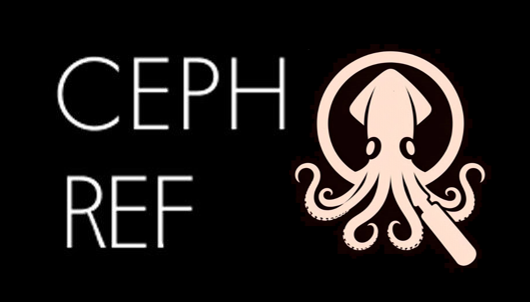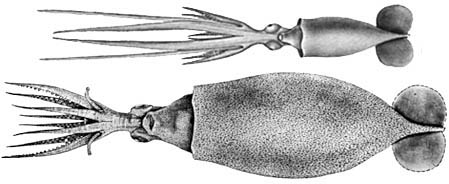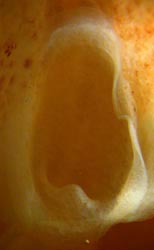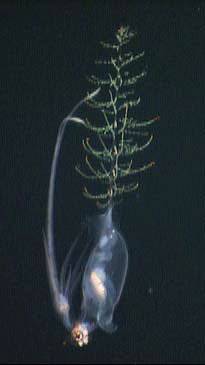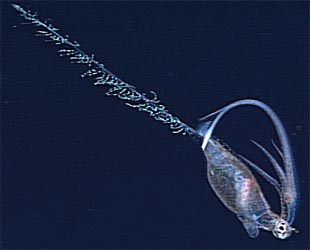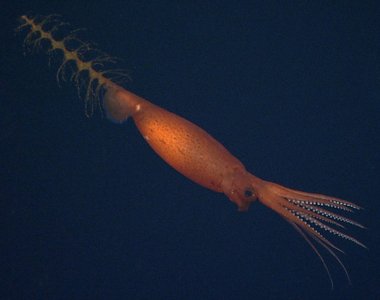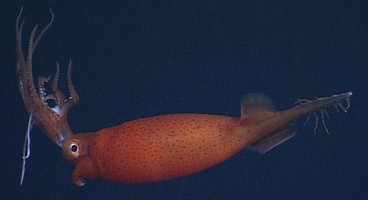Planctoteuthis oligobessa
Planctoteuthis oligobessa
Richard E. Young and Clyde F. E. RoperIntroduction
Planctoteuthis oligobessa is a small species (maximum size = 76 mm ML). It can be separated from subadults of other members of the genus by the small fins and few suckers on arms IV. Little is known of its biology.Brief diagnosis:
A Planctoteuthis with ...- 2-4 suckers on each arm IV.
- fin length 1/4 - 1/3 of ML.
- Arms
- 2-4 suckers on each arm IV.
- Arm lengths: Arms I: 32-39% of ML (subadults); arms I: 24-25% of ML (adults); arms III: 47-61% of ML (subadults). arms IV: 121-135% of ML (subadults); arms II-IV 29-39% of ML (adults).
- Large arm suckers with 25-35 small, narrow, blunt teeth on distal 3/4 of ring.
Figure. Oral view of large arm suckers of P. oligobessa, 27 mm ML. A-D - Suckers from arm I-IV respectively.
- Tentacles
- Clubs bilaterally symmetrical in shape.
- Club length 12-18% of ML.
- Suckers without teeth on inner ring.
- Clubs without keels.
Figure. Oral views of club sucker and club, 27 mm ML. Drawings from Young (1972).
- Head
- Beaks: Descriptions can be found here: Lower beak; upper beak.
- Beaks: Descriptions can be found here: Lower beak; upper beak.
- Funnel
- Locking apparatus with slender antitragus consisting of a single lobe.
Figure. Funnel locking apparatuses of P. oligobessa. Left - 27 mm ML. Drawing from Young (1972). Right - Subadult, off Southern California.
- Locking apparatus with slender antitragus consisting of a single lobe.
- Fins
- Length 23-33% of ML.
- Measurements
*Without carpusParatype Paratype Holotype Sex -- -- Female Mantle length 34 34 76 Mantle width 11 11 28 Fin length 7 8 14 Fin width 12 -- -- Length, arm I 12 11 19 Length, arm II 15 15 27 Length, arm III 18 16 29 Length, arm IV 46 41 30 Club length* 6 4 -- Arm IV sucker count (left / right) 3 / -- 3 / 2 2 / 3
Comments
Individuals of Planctoteuthis taken in trawls invariably show a broken gladius at the posterior end of the fin. The existence of a long and decorative tail was not known until ROV photographs captured insitu images. These images were taken by the Monterey Bay Aquarium Research Institute. The ventrally bulging eyes identify it as Planctoteuthis and the locality off California strongly suggests that it is P. oligobessa. The function of the tail is unknown although Vecchione et al. (1992) noted that the tail of Chiroteuthis (see Chiroteuthidae page) causes the young squid to resemble certain siphonophores suggesting protective mimicry.
Figures. Lateral views, insitu with natural orientation, apparently of P. oligobessa, taken by a remotely operated vehicle (ROV) off California. Left image © MBARI 2001. Right image © MBARI 2011.
